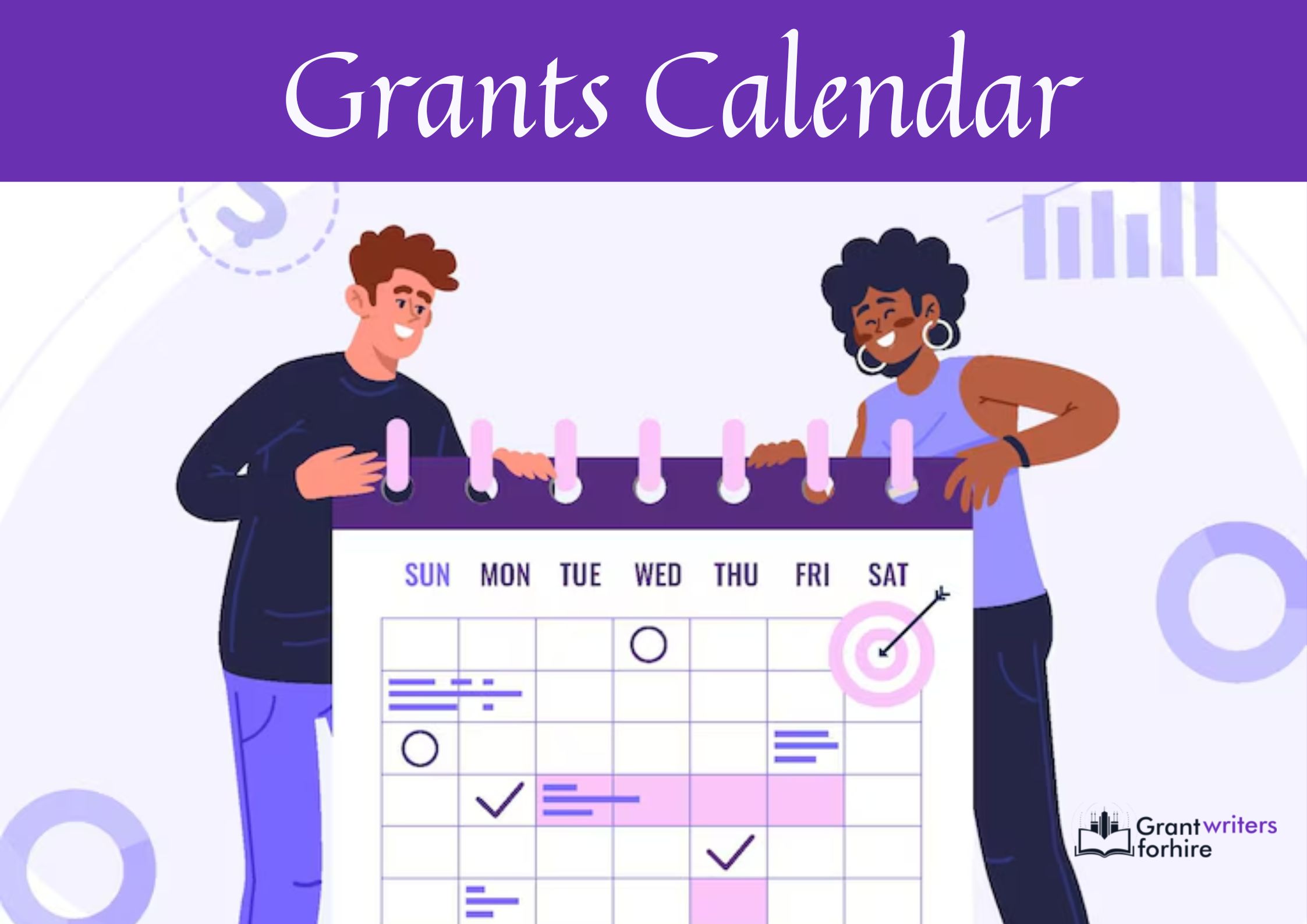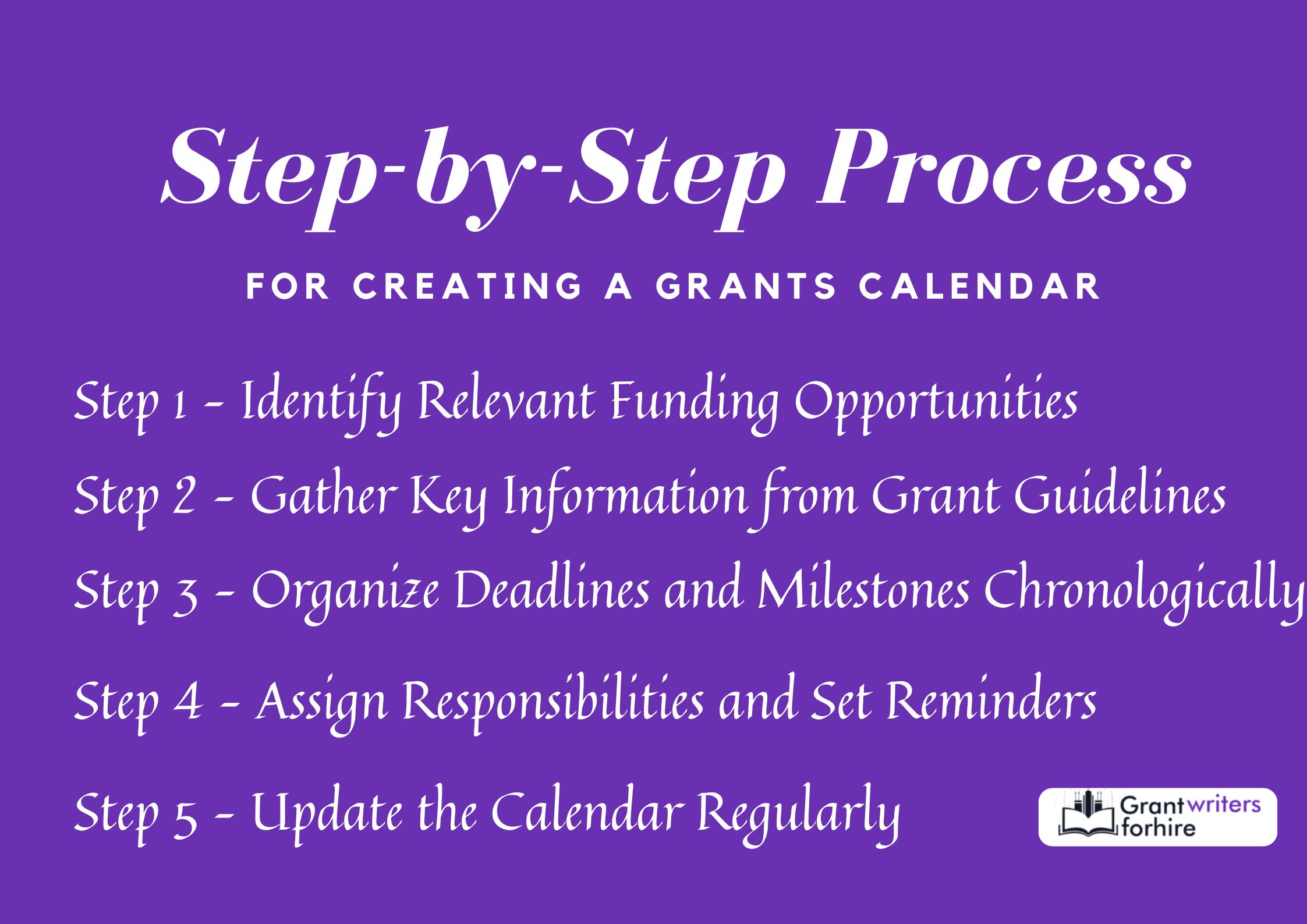How to Create a Grants Calendar.
Getting grants can help nonprofits do more good work. But finding and applying for the right grants at the right time can be hard. That is why making a grants calendar is so helpful.

A grants calendar is a tool that shows what grants are available, when they open, and when they are due. It helps nonprofit workers and grant writers stay on track.
This calendar can also remind teams to gather the right papers, write on time, and meet all deadlines. It brings order and clear steps to what can be a busy and confusing process. Many strong nonprofit programs begin with good planning, and a grants calendar is part of that. In this article, we will explain each step to make one. This guide will not only help you stay better prepared but also to reach more funding opportunities.
What Is a Grants Calendar and Why You Need One
A grants calendar is a simple tool that helps nonprofits and grant writers keep track of grant opportunities. It is like a planner that shows important dates such as when to start working on a grant, when it is due, and when the money might be given. The main purpose of a grants calendar is to help you stay organized and plan ahead. When everything is written down in one place, it is easier to stay focused and meet deadlines.
A grants calendar also helps you avoid last-minute rush and missing out on good funding chances. It gives your team more time to write better applications and collect all the needed documents. Using a grants calendar can improve your chances of getting more grants because you are better prepared. It also helps you plan which grants are best for your group, based on your goals. This kind of planning saves time and reduces stress. Generally, a grants calendar makes the grant process easier, smoother, and more successful.
Key Components of an Effective Grants Calendar
An effective grants calendar includes the most important details that help you stay ready for each grant. One key part is the application deadline. This tells you the last day to send in your grant request. Some grants do not have a fixed deadline; these are called rolling submissions, and they stay open until all funds are used.
The calendar should also show the rules about who can apply, this is called eligibility. It helps you focus only on grants that match your group’s goals. Another important part is knowing what documents you need, like budgets or letters. These take time to prepare, so the calendar should show how early you need to start.
It is also smart to include time for your team to review the grant before sending it. This is called the internal review, and it helps catch any mistakes. A good grants calendar keeps all these parts clear so nothing is missed. It helps your team stay on time, stay focused, and send better applications.
Step-by-Step Process for Creating a Grants Calendar

Creating a grants calendar is a smart way to stay organized and ready for funding opportunities. It helps you see what grants are coming up, what they need, and when to act. This step-by-step guide will show you how to build a calendar that keeps your team on track and makes the grant process easier. Following these steps helps you to get started and stay ahead in your grant planning. These steps are;
Step 1 – Identify Relevant Funding Opportunities
Start by looking for grants that match your nonprofit’s mission and needs. Search on grant websites, government pages, or funding databases. Make a list of opportunities that your organization qualifies for.
Look at the types of projects the grant supports to make sure it fits your work. Skip any grants that do not match your goals. Save the name of each grant, the website, and the main contact person if there is one. This step gives you a strong starting point to build your calendar.
Step 2 – Gather Key Information from Grant Guidelines
Once you have a list, read each grant’s rules carefully. These rules are often called guidelines and explain what the funder wants. Look for details like who can apply, how much money is offered, and what documents are needed.
Write down the deadline and any early steps that must be done, like signing up or writing a letter of intent. Note if the grant allows online applications or paper submissions. This helps you prepare in the right way. Keeping this information in one place will save you time later.
Step 3 – Organize Deadlines and Milestones Chronologically
In step three, organize everything by date. Put the final due date first, then work backwards to set dates for each task. Add key milestones like the day to start writing, the day to collect documents, and when to get feedback.
Use a digital calendar or spreadsheet so it is easy to move things around. This step helps you see how much time you really have. It also helps you avoid rushing near the deadline. A clear timeline makes it easier to plan each week.
Step 4 – Assign Responsibilities and Set Reminders
Grant writing is a team effort, so assign tasks to the right people. One person might write the main sections, while another collects letters or budget information. Mark each person’s name next to the task on the calendar. Add reminders a few days before each task is due. You can use email alerts, apps, or even phone alarms. This makes sure everyone knows what to do and when. Clear roles help avoid confusion and missed steps.
Step 5 – Update the Calendar Regularly
A good grants calendar is not something you make once and forget. It needs to be checked and updated often. New grants may come up, and dates can change. If someone finishes a task early or late, update the calendar. This helps your team stay on the same page. Review the calendar at team meetings to track progress. Keeping the calendar fresh makes it more useful and helps you apply for more grants with less stress.
Best Tools and Templates for Building a Grant Calendar
Using the best tools and templates makes building a grant calendar simple and effective. Google Sheets is a great free tool that lets you create a calendar that your whole team can view and edit online. You can sort tasks by date, color-code them, and add comments. Excel is also useful, especially if you work offline. It helps you organize deadlines, documents, and team tasks clearly. For bigger teams or many grants, grant management software like GrantHub or Instrumental gives more features, such as reminders, file storage, and team updates.
There are also many free grant calendar templates online. These templates already have sections for deadlines, documents needed, and funder details. You can download them and start using them right away. They save time and help you follow a clear format.
To make the template fit your team’s needs, you can change the column names or add new ones like “person in charge” or “review date.” You can also set color codes for high-priority tasks or highlight approaching deadlines. Add reminders using Google Calendar or apps like Trello. Always make sure your calendar matches how your team works. A good calendar setup helps you stay organized, avoid stress, and apply for more grants on time.
Tips for Maintaining and Updating Your Grants Calendar
Keeping your grants calendar up to date is very important if you want to stay on track. One good way to do this is by doing monthly reviews. Take time each month to look at your calendar, check upcoming deadlines, and see what tasks are still left. This helps you stay ahead and avoid last-minute problems.
You should also talk with your team when something changes. If a deadline moves or a task is done early, everyone should know. Use emails or a shared app to keep everyone updated.
Another smart tip is to use tools that send automatic alerts. For example, Google Calendar or grant software can remind you about due dates or tasks. These alerts help you remember what to do and when to do it. Keeping your calendar clean, correct, and shared with your team makes the grant process smooth. It also builds trust and teamwork. When your calendar is well-maintained, you can focus more on writing strong grant applications and less on catching up.
Common Mistakes to Avoid When Creating a Grants Calendar

When building a grants calendar, it is easy to make mistakes that can cause delays or missed chances. One big mistake is not thinking about your team’s schedule and what they can handle. If too many tasks fall at the same time, people may feel stressed or forget things. Always check if your team has enough time to complete each step.
Another mistake is forgetting the rules of the submission platform. Some grants need to be sent through special websites that close at certain hours or ask for extra steps. If you do not check this early, you might miss the deadline.
Also, many nonprofits forget to track reapplication chances. Some grants allow you to apply every year, but if you do not mark this in your calendar, you might forget to try again. Reapplying can be easier than applying for a new grant, so it is smart to keep track of those dates. Avoiding these mistakes will help your team stay organized, reduce stress, and improve your chances of winning more grants. A careful calendar leads to better planning and better results.
Examples of Grant Calendars from Successful Organizations
Looking at real examples of grant calendars can help you understand how to make your own. A small nonprofit, for example, might use a simple yearly calendar that shows all the grants they plan to apply for each month. They include deadlines, task lists, and who is in charge of each grant. This helps the team stay focused all year and not miss any chances. They also leave space to add new grants they discover later in the year.
Schools and colleges often follow a quarterly grant roadmap. Each three-month period has a list of grants to apply for, along with dates for writing, reviewing, and sending applications. This system helps them manage their busy academic calendar while still applying for grants. These examples show that no matter the size of your group, having a clear plan for the year or quarter can make a big difference. A working grant calendar brings order, saves time, and helps your team reach more funding goals.
Why a Grants Calendar Is a Game-Changer
A grants calendar is a game changer because it helps your team get ready for funding before deadlines arrive. When you plan early, you have time to collect the right documents, write clearly, and avoid mistakes. This makes your grant applications stronger and more complete. Being ready also means you can apply for more grants throughout the year, which helps grow your funding over time. It builds a system where your team knows what to do and when to do it.
Planning ahead with a grants calendar also gives you a smart advantage. You are not just reacting to dates, you are making smart choices about which grants to go for and when. This saves time and helps you use your team’s energy better. You can spot gaps, adjust plans, and avoid surprises. In the long run, this kind of planning helps your nonprofit grow stronger and earn trust from funders. For this reason grants calendar is not just helpful, it changes how your whole team works and wins.

